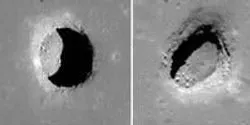lasers

A space-based system that relies on lasers to generate and deliver energy to spacecraft has won a University of Alabama in Huntsville (UAH) professor a U.S. patent and could become a first-line defense against asteroids on a collision course with Earth.

Since lasers were invented in 1960, they have penetrated countless scientific, industrial and recreational fields: from eye surgery to DVD players, from cutting steel to triggering ignition in missile stages.

Light can come in many frequencies, only a small fraction of which can be seen by humans. Between the invisible low-frequency radio waves used by cell phones and the high frequencies associated with infrared light lies a fairly wide swath of the electromagnetic spectrum occupied by what are called terahertz, or sometimes submillimeter, waves. Exploitation of these waves could lead to many new applications in fields ranging from medical imaging to astronomy, but terahertz waves have proven tricky to produce and study in the laboratory. Now, Caltech chemists have created a device that generates and detects terahertz waves over a wide spectral range with extreme precision, allowing it to be used as an unparalleled tool for measuring terahertz waves.

Take a material that is a focus of interest in the quest for advanced solar cells. Discover a "freshman chemistry level" technique for growing that material into high-efficiency, ultra-small lasers. The result, disclosed today (Monday, April 13) in Nature Materials, is a shortcut to lasers that are extremely efficient and able to create many colors of light.

The newest particle accelerators and those of the future will be built with superconducting radio-frequency (SRF) cavities, and institutions around the world are working hard to develop this technology. Fermilab's advanced superconducting test accelerator was built to take advantage of SRF technology accelerator research and development.

University of Washington scientists have built a new nanometer-sized laser — using the thinnest semiconductor available today — that is energy efficient, easy to build and compatible with existing electronics.












